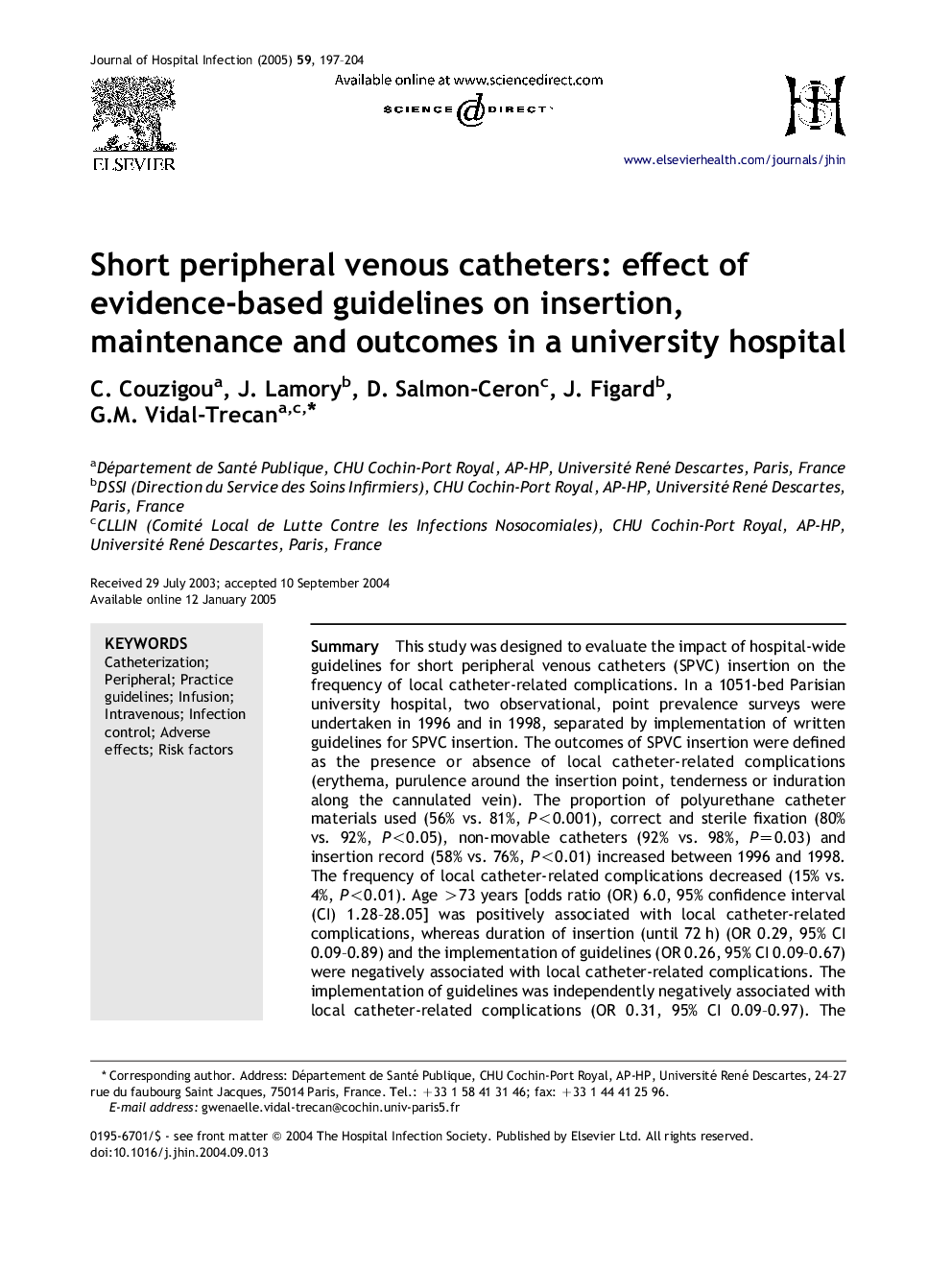| Article ID | Journal | Published Year | Pages | File Type |
|---|---|---|---|---|
| 9269400 | Journal of Hospital Infection | 2005 | 8 Pages |
Abstract
This study was designed to evaluate the impact of hospital-wide guidelines for short peripheral venous catheters (SPVC) insertion on the frequency of local catheter-related complications. In a 1051-bed Parisian university hospital, two observational, point prevalence surveys were undertaken in 1996 and in 1998, separated by implementation of written guidelines for SPVC insertion. The outcomes of SPVC insertion were defined as the presence or absence of local catheter-related complications (erythema, purulence around the insertion point, tenderness or induration along the cannulated vein). The proportion of polyurethane catheter materials used (56% vs. 81%, P<0.001), correct and sterile fixation (80% vs. 92%, P<0.05), non-movable catheters (92% vs. 98%, P=0.03) and insertion record (58% vs. 76%, P<0.01) increased between 1996 and 1998. The frequency of local catheter-related complications decreased (15% vs. 4%, P<0.01). Age >73 years [odds ratio (OR) 6.0, 95% confidence interval (CI) 1.28-28.05] was positively associated with local catheter-related complications, whereas duration of insertion (until 72Â h) (OR 0.29, 95% CI 0.09-0.89) and the implementation of guidelines (OR 0.26, 95% CI 0.09-0.67) were negatively associated with local catheter-related complications. The implementation of guidelines was independently negatively associated with local catheter-related complications (OR 0.31, 95% CI 0.09-0.97). The results suggest that hospital guidelines for SPVC insertion can improve catheter care and significantly reduce local catheter-related complications.
Keywords
Related Topics
Life Sciences
Immunology and Microbiology
Applied Microbiology and Biotechnology
Authors
C. Couzigou, J. Lamory, D. Salmon-Ceron, J. Figard, G.M. Vidal-Trecan,
